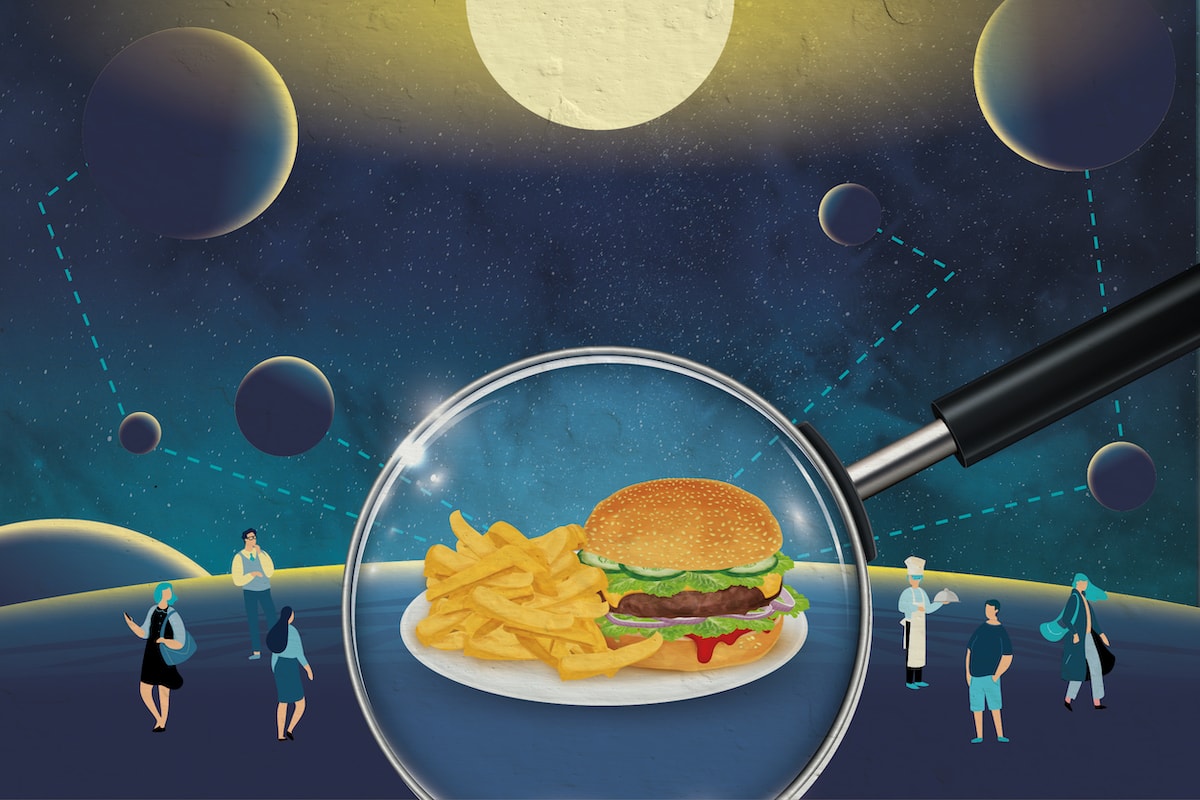Food Waste in Restaurants: Exploring the Facts
Learn about the amount of food waste in the restaurant industry and its impact on the environment. Discover ways to reduce food waste in your...
Increasingly more guests want to know where their food comes from. Find out here why food transparency is also important for the restaurant industry.

For some time now, it has concerned me that there is no food transparency in the hospitality industry, compared to the transparency in supermarkets. In grocery stores, for example, I know where the products come from or whether they are labeled with a certain seal. Based on this information, I can make a more informed decision on what I decide to buy. In restaurants, on the other hand, we are still a long way from this type of transparency.
This is still true, even though today's consumers are increasingly more concerned about what is in the food they eat. They not only pay attention to the ingredients and nutritional values, but also want to know where the food they eat comes from. This is already possible with our neighbors in Switzerland. There, origin labeling has been mandatory on menus for a few years.
Particularly due to this increasing interest, it will be imperative for restaurant businesses to deal with this issue. In this Utopia Gastronomica article, I would therefore like to get to the bottom of the lack of food transparency in the hospitality industry. In addition, I would like to highlight the opportunities that have presented themselves to businesses that have gained a competitive advantage through this transparency.
As in many other areas – such as innovative concepts or online food ordering – the COVID-19 crisis has led to a change in perspective when it comes to food transparency. The demand for transparency has increased, and more and more people are interested in what exactly they are consuming.

The demand for transparency goes hand in hand with the demand for traceability. This can be seen, not only in the interest among consumers, but also in an economic aspect. According to a report by MarketWatch, the market for food traceability will reach $18 billion by 2024, with a compound annual growth rate of 9 %.
In order for this two-sided demand from consumers to be satisfied, there must be a central database as a basis and subsequently, the effective use of this data. One promising piece of technology that has the potential to do this is blockchain.
A blockchain is a virtual chain of individual data blocks, that are encrypted by cryptographic processes. Information is not stored centrally in one place, but on different computers.
Utilizing such technology, the barcode of a food product can be scanned with a smartphone. This provides consumers with all possible data of the product and allows them to trace the route of the product. This, in turn, helps consumers to rely on more than just the packaging, when searching for product information in the supermarket. This traceability and transparency make it possible to react to production errors or product recalls.
The question that now arises is, why has this transparent food supply chain never been mentioned in the hospitality industry? Guests already know which allergens, nutritional values and additives are contained in the dishes. However, other information, such as the origin of a food product, is denied to customers. But this is just as important as the labeling of allergens, additives, or nutritional values.
Basically, the aim is to make the food supply chain transparent, therefore enabling traceability from the field to the plate. The driving force behind this is technology, i.e., digitalization. Intelligent and networked software systems can record every bit of information as well as steps taken across the entire production process.
This transparent supply chain results in several advantages. It ensures that modern technologies, that enable transparency, meet the changing demands of consumers for product information. Food manufacturers benefit from the data collected in the supply chain, which provides a platform for better decision-making. The aspect of feedback from the market can also be mentioned here. New products, for example, can be talked about with manufacturers directly and evaluated immediately, without much market research. Analyses and data histories offer new insights into production and can show at which step of the production process, there is need for optimization.

But how can complete food transparency along the entire supply chain be ensured? As it is often the case with processes that are optimized through digitalization or technology, the same applies here: A structured approach is everything. After all, this is definitely a task that cannot be completed overnight. However, the use of software solutions can support implementation right from the start. Comprehensive cooperation and coordination between all those involved – food manufacturers, supply companies, and restaurateurs – is also required.
As explained earlier in this article, intelligent systems make it possible to map all processes along the entire supply chain. What's required for this, is a modern ERP system with which all movements of a product can be tracked: from supplier, directly to the plate. The special feature of these systems is that all this information is available at any time – without any interruption. The data obtained, is maintained via a single interface, and updated automatically. Thanks to this increased information transparency, you can make decisions in the blink of an eye and gain actionable insights.
Since tracking can be mapped comprehensively, it is important to determine which data should be tracked. This allows you to track data on a broader level, such as tracking a specific truckload, or tracking the date and time of arrival of a specific shipment of goods.
Whether you're a small business or a restaurant chain, food transparency and traceability will become the new normal. After all, this represents an essential component of customer loyalty and guest satisfaction. Customers will remain loyal to a company that provides them with easy and reliable access to product information and openly displays it, for example, in the menu. Restaurants that can close the gap between the information available and the ability to use it effectively, will have tremendous advantages in the marketplace. It will also not be a problem for guests to pay more for their food, if they know exactly what it is they're being served.
The demand for transparency and traceability of food is becoming even greater. The hospitality industry will also have to deal with this issue to meet the changing demands of consumers.
To support this mission, a network initiative called Foodservice Digital Hub has come together to work on innovative and digital solutions for the food service industry. FoodNotify is also part of this network. One of the key aspects it aims to promote, relates to the goal of creating a transparent hospitality industry.
Sustainable food supply depends on a solid supply chain. Traceability should be integrated into the supply chain, as food safety and quality can be monitored much easier, if all stakeholders in the supply chain, can identify the direct source and direct recipients of traceable products.
It will be imperative for food service operations to address food transparency and traceability. The more transparency the food service industry brings to the supply chain, the better it is for everyone – and thanks to increasing investment and cutting-edge technologies, a future is in sight, where we want to understand, and will understand our food much better.
Learn about the amount of food waste in the restaurant industry and its impact on the environment. Discover ways to reduce food waste in your...
The food supply chain comes with a number of challenges. Find out here what solutions exist and what the hospitality industry can do.
Want to know how to reduce food waste in restaurants? Here are 5 tips you can use to avoid wasting food in your hospitality business.
Make sure you never miss out on updates and trends about digitalization in the hospitality industry by subscribing to our monthly newsletter. You will receive useful information delivered directly to your inbox.